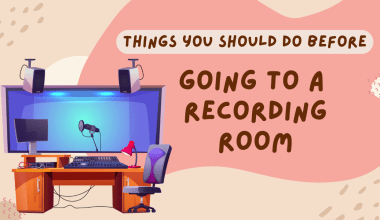If you’re an independent artist, getting your music or video content out to the world can feel overwhelming. With so many streaming platforms available, the process may seem complicated, but it doesn’t have to be. By strategically uploading your video on all streaming platforms, you can maximize your audience reach and gain the visibility you deserve. In this guide, we’ll walk you through the steps to Upload your video on all streaming platforms as an independent artist.
Why Upload your video on all streaming platforms as an independent artist Matters
As an independent artist, reaching as many viewers as possible is crucial for your growth. Streaming platforms like YouTube, Vimeo, and TikTok have millions of active users who are constantly searching for fresh content. By distributing your video across multiple platforms, you ensure that your work has a better chance of being discovered. It’s like casting a wide net — the more places your video exists, the greater your potential for gaining fans.
In addition, having your video available on all major platforms increases your credibility. When fans see your content across various platforms, it reinforces your professionalism and shows that you take your craft seriously. This visibility can also open doors to new collaborations, partnerships, and opportunities.
Getting Started: Preparing Your Video for Upload
Before uploading your video on all streaming platforms, it’s important to make sure your content is ready. A high-quality video stands out and keeps viewers engaged. Here are some things to consider:
- Optimize Your Video Quality: Make sure your video is shot in high resolution (preferably 1080p or higher). Clear visuals and crisp audio are non-negotiable.
- Create an Eye-Catching Thumbnail: A thumbnail is the first thing viewers notice. Design a thumbnail that grabs attention and reflects the vibe of your video.
- Add Closed Captions: Including captions makes your video more accessible and improves its searchability on many platforms.
- Prepare Metadata: Write a compelling title, description, and tags. These elements are key to helping your video get discovered.
- Format Your Video Correctly: Different platforms have different requirements. Ensure your video meets the specifications for each platform you plan to upload to.
Choosing the Right Platforms for Your Video
Now that your video is ready, it’s time to decide where to upload it. Here’s an overview of the most popular platforms and their benefits:
YouTube
YouTube is a must for any independent artist. It’s the second-largest search engine in the world and the go-to platform for video content. By uploading your video here, you tap into a massive audience base.
Vimeo
Vimeo is ideal for artists who prioritize high-quality visuals. It’s known for its professional user base and creative community.
TikTok and Instagram Reels
These platforms are perfect for short, engaging videos. If your video has a catchy element, sharing it on TikTok or Instagram Reels can help it go viral.
Facebook and Twitter
Social media platforms like Facebook and Twitter are great for sharing and promoting your video. They make it easy for fans to engage with and share your content.
Spotify (for Music Videos)
If your video is tied to a song, you can distribute it to Spotify. Use a distributor like DistroKid or TuneCore to get your music video on this platform.
Other Niche Platforms
Depending on your genre or target audience, consider niche platforms like Dailymotion or even Reddit. These platforms can offer a unique way to connect with specific groups of viewers.
Step-by-Step Guide to Uploading Your Video
1. Create Accounts on Each Platform
Start by setting up accounts on all the platforms you plan to use. Ensure your artist name and branding are consistent across all accounts.
2. Upload Your Video
One platform at a time, begin uploading your video. Follow these steps:
- Log in to your account.
- Click on the “Upload” button.
- Select your video file.
- Fill in the title, description, and tags.
- Choose an appropriate thumbnail.
- Add captions if the platform supports them.
- Hit “Publish” or “Schedule” to post your video.
After uploading, share your video link on your social media channels. Engage with viewers by responding to comments and encouraging them to share your content.
4. Monitor Performance
Use analytics tools on each platform to track how your video is performing. Pay attention to views, likes, shares, and comments. This data will help you understand what’s working and what isn’t.
Best Practices for Uploading Your Video Everywhere
- Use a Content Calendar: Keep track of where and when you’re uploading your videos. This helps you stay organized and consistent.
- Repurpose Your Video: Edit your video into shorter clips for platforms like TikTok and Instagram. This extends the life of your content.
- Leverage Hashtags: Use relevant hashtags to increase your video’s discoverability on social media platforms.
- Engage with Your Audience: Respond to comments and messages. Building a connection with your viewers encourages loyalty.
- Collaborate with Other Creators: Partnering with other artists can help you reach new audiences.
Overcoming Challenges as an Independent Artist
Uploading your video on all streaming platforms might feel like a daunting task, especially if you’re doing everything yourself. Here are some common challenges and how to overcome them:
- Time Constraints: Use scheduling tools to upload your videos in advance. This saves time and ensures consistency.
- Limited Budget: Start with free platforms like YouTube and TikTok. As your audience grows, you can invest in premium options like Vimeo Pro.
- Technical Issues: Learn the technical requirements for each platform and use video editing tools to meet them.
The Long-Term Benefits of Wide Distribution
When you consistently upload your video on all streaming platforms, you build a stronger online presence. Fans can find your work easily, no matter which platform they prefer. This accessibility increases your chances of growing a loyal fan base. Plus, platforms like YouTube and Spotify offer monetization opportunities once you meet their eligibility criteria.
Remember, success doesn’t happen overnight. Be patient and keep refining your strategy. By staying consistent and engaging with your audience, you’ll see the rewards of your hard work.
Final Thoughts
Upload your video on all streaming platforms as an independent artist might take effort, but the results are worth it. Every platform you use brings you closer to your audience and expands your reach. By following this guide, you’re setting yourself up for success in the ever-competitive world of content creation.
Take that first step today. Prepare your video, choose your platforms, and share your art with the world. Your audience is waiting!
Related Articles:
For further reading, explore these related articles:
For additional resources on music marketing and distribution, visit DMT RECORDS PRIVATE LIMITED.






